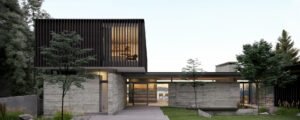In recent years, Building Information Modeling (BIM) has become an increasingly popular tool for architects, engineers and builders. BIM is a 3D modeling process that allows professionals to create detailed plans and models of buildings and structures. It has revolutionized the construction industry, allowing for more efficient and accurate design and planning of projects.
As BIM technology continues to develop, its use in the built environment is expected to become even more widespread. With the advancements in computing power and software, BIM is becoming more powerful and easier to use. This is allowing for more complex and detailed BIM models to be created, and it is making it easier to incorporate BIM into the everyday workings of the construction industry.
BIM is also being used to improve the quality of construction projects. By creating detailed 3D models, it is possible to identify any potential problems before construction begins. This helps to ensure that projects are completed on time, within budget, and to the highest possible standards.
The use of BIM is also becoming increasingly popular for virtual reality (VR) applications. With the help of BIM, it is possible to create realistic 3D models of buildings and structures, allowing people to explore them in a virtual environment. This has already been used to great effect in the architecture and engineering industries, and its use is expected to become more widespread in the future.
The use of BIM is also becoming more common in areas such as energy management, asset management, and facility management. By creating detailed BIM models, it is possible to monitor energy usage, track assets, and manage facilities more efficiently. This can help to reduce costs and improve efficiency, which is beneficial to both companies and the environment.
Overall, the future of BIM in the built environment looks bright. With the advances in technology, it is becoming increasingly easy to use and powerful. This is allowing for more detailed and accurate models to be created, and it is making it easier to incorporate BIM into everyday construction projects. As more companies adopt BIM, it is expected that its use in the built environment will continue to grow.



